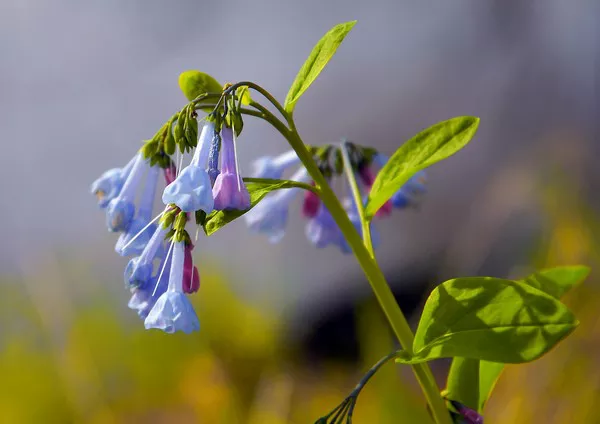Approximately 66 million years ago, a catastrophic event unfolded when a colossal space rock collided with the Yucatán Peninsula. Tsunamis ravaged coastlines, ferocious fires consumed forests, and a shroud of dust and debris cast a prolonged darkness over the Earth, resulting in the extinction of about three-quarters of the planet’s species, most notably the non-avian dinosaurs.
However, amidst this devastation, one group of organisms appeared to defy the odds. In a recent study published in the journal Biology Letters, researchers have presented compelling evidence that flowering plants, scientifically known as angiosperms, remarkably endured the Cretaceous-Paleogene (K-Pg) mass extinction event with relatively minor consequences compared to other life forms of that era. In fact, this catastrophic event might have played a pivotal role in the ascent of flowering plants as the predominant green life on our planet today.
“It’s just surreal to contemplate that flowering plants survived the K-Pg event while dinosaurs did not,” remarked Jamie Thompson, an evolutionary biologist at the University of Bath and one of the study’s authors.
Angiosperms first emerged in the early Cretaceous, frequently overshadowed by older plant groups like conifers and ferns. However, they experienced rapid diversification as the looming mass extinction approached.
To assess how angiosperms fared during the K-Pg extinction event, Dr. Thompson collaborated with Santiago Ramírez-Barahona, an evolutionary geneticist at the National Autonomous University of Mexico. Initially impeded by the scarcity of fossilized flowers in comparison to fossilized bones, the researchers turned to two extensive evolutionary trees, comprising over 100,000 living angiosperm species. These vast datasets, known as phylogenies, were calibrated using molecular indicators, enabling scientists to categorize related species and determine the time when particular lineages emerged and vanished.
The findings were striking. While numerous angiosperm species perished alongside dinosaurs, pterosaurs, and marine reptiles, particularly those in proximity to the asteroid impact site, the larger lineages of flowering plants survived the extinction event, exhibiting a relatively steady rate of extinction over time.
Paige Wilson Deibel, a paleobotanist at the Burke Museum in Seattle not involved in the study, noted that this aligns closely with the plant fossil record, indicating high species-level extinction but a consistent survival of major lineages.
In contrast, the evolutionary tree of dinosaurs tells a different story. “Non-avian dinosaurs lost so many species, they lost entire lineages, which we don’t see in angiosperms,” Dr. Thompson remarked.
While further research is required to elucidate precisely how angiosperms navigated one of Earth’s deadliest extinctions, the researchers propose that their adaptability was a key factor. Flowering plants are pollinated by both insects and wind, affording them substantial reproductive flexibility. Their vast diversity, including grasses, sycamore and magnolia trees, and aquatic waterlilies by the end of the Cretaceous, might have contributed to their resilience in the face of devastation.
As Earth’s climate stabilized and life rebounded, flowering plants assumed dominance in terrestrial ecosystems. A study in 2021 comparing Colombian fossils from before and after the K-Pg boundary underscored how the extinction event paved the way for angiosperms to thrive, eventually giving rise to the first rainforests, which continue to teem with flowering plant diversity.
Dr. Ramírez-Barahona suggested that this trend likely unfolded in ancient ecosystems worldwide. “Before and after the K-Pg impact, the entire ecological composition changed,” he stated. “They restructured themselves into these new flowering ecosystems.” Today, nearly 80 percent of all terrestrial plants are angiosperms.
This transformation following the dinosaur-extincting event set the stage for the emergence of modern ecosystems. Rather than giant reptiles, these environments became inhabited by mammals, which had survived the mass extinction alongside flowering plants and were poised for a surge in diversity.
Dr. Wilson Deibel pointed out, “After the K-Pg boundary, we’re starting to see plants and animals that we recognize. It’s in this really dynamic time of giant environmental disasters and mass extinctions that the environment becomes analogous to what we see today.”


